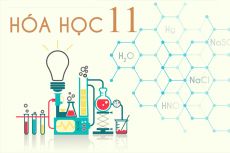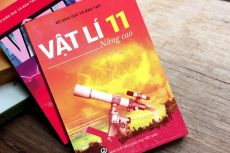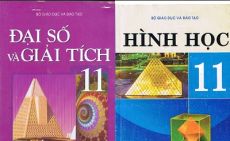Water scarcity is fast becoming one of the major limiting factors in world crop production. In many areas, poor agricultural practices have led to increasing desertification and the loss of formerly arable lands. Consequently, those plants species that are well adapted to survival in dry climates are being looked at for an answer in developing more efficient crops to grow on marginally arable lands.
Plants uses several mechanisms to ensure their survival in desert environments. Some involve purely mechanical and physical adaptations, such as the shape of the plant's surface, smaller leaf size, and extensive root systems. Some of the adaptations are related to chemical mechanisms. Many plants, such as cacti, have internal gums and mucilages which give them water-retaining properties. Another chemical mechanism is that of the epicuticular wax layer. This wax layer acts as an impervious cover to protect the plant. It prevents excessive loss of internal moisture. It also protects the plant from external aggression, which can come from inorganic agents such as gases, or organic agents which include bacteria ant plant pets.
Researchers have proposed that synthetic waxes with similar protective abilities could be prepared based on knowledge of desert plants. If successfully developed, such a compound could be used to greatly increase a plant's ability to maintain health in such adverse situations as inadequate water supply, limited fertilizers availability, attacked by pets, and poor storage after harvesting
Which of the following is a mechanical or physical mechanism that desert plants use?
Suy nghĩ và trả lời câu hỏi trước khi xem đáp án
Lời giải:
Báo saiSome involve purely mechanical and physical adaptations, such as the shape of the plant's surface smaller leaf size, and extensive root systems.
(hình dạng của bề mặt thực vật, kích thước lá nhỏ, và hệ thống rễ mở rộng)
Câu hỏi liên quan
-
New surveys suggest that the technological tools we use to make our lives easier are killing our leisure time. We are working longer hours, taking fewer and shorter vacations (and when we do go away, we take our cell phones, PDAs, and laptops along). And, we are more stressed than ever as increased use of e-mail, voice mail, cell phones, and the Internet is destroying any idea of privacy and leisure.
Since the Industrial Revolution, people have assumed that new labor-saving devices would free them from the burdens of the workplace and give them more time to grow intellectually, creatively, and socially -exploring the arts, keeping up with current events, spending more time with friends and family, and even just ''goofing off''.
But here we are at the start of the 21st century, enjoying one of the greatest technological boom times in human history, and nothing could be further from the truth. The very tools that were supposed to liberate us have bound us to our work and study in ways that were inconceivable just a few years ago. It would seem that technology almost never does what we expect.
In 'the old days', the lines between work and leisure time were markedly clearer. People left their offices at a predictable time, were often completely disconnected from and out of touch with their jobs as they traveled to and from work, and were off-duty once they were home. That is no longer true. In today's highly competitive job market, employers demand increased productivity, expecting workers to put in longer hours and to keep in touch almost constantly via fax, cell phones, e-mail, or other communications devices. As a result, employees feel the need to check in on what is going on at the office, oven on days off. They feel pressured to work after hours just to catch up on everything they have to do. Workers work harder and longer, change their work tasks more frequently, and have more and more reasons to worry about job security.
Bosses, colleagues, family members, lovers, and friends expect instant responses to voice mail and e-mail messages. Even college students have become bound to their desks by an environment in which faculty, friends, and other members of the college community increasingly do their work online. Studies of time spent on instant messaging services would probably show staggering use.
This is not what technology was supposed to be doing for us. Now technologies, from genetic research to the Internet, offer all sorts of benefits and opportunities. But, when new tools make life more difficult and stressful rather than easier and more meaningful - and we are, as a society, barely conscious of it - then something has gone seriously awry, both with our expectations for technology and our understanding of how it should benefit us.Which of the following could be the main idea of the fifth paragraph?
-
We live in a world of tired, sleep deprived people. In his book Counting Sheep, Paul Martin - a behavioural biologist - describes a society which is just too busy to sleep and which does not give sleeping the importance it deserves. Modern society has invented reasons not to sleep. We are now a 24/7 society where shops and services must be available all hours. We spend longer hours at work than we used to, and more time getting to work.
Mobile phones and email allow us to stay in touch round the clock and late-night TV and the Internet tempt us away from our beds. When we need more time for work or pleasure, the easy solution is to sleep less. The average adult sleeps only 6.2 hours a night during the week, whereas research shows that most people need eight or even eight and a half to feel at their best. Nowadays, many people have got used to sleeping less than they need and they live in an almost permanent state of'sleep debt'.
Until the invention of the electric light in 1879 our daily cycle of sleep used to depend on the hours of daylight. People would get up with the sun and go to bed at nightfall. But nowadays our hours of sleep are mainly determined by our working hours (or our social life) and most people are woken up artificially by an alarm clock. During the day caffeine, the world's most popular drug, helps to keep us awake. 75% of the world's population habitually consume caffeine, which up to a point masks the symptoms of sleep deprivation.
What does a chronic lack of sleep do to us? As well as making us irritable and unhappy as humans, it also reduces our motivation and ability to work. This has serious Implications for society in general. Doctors, for example, are often chronically sleep deprived, especially when they are on'night call', and may got less than three hours'sleep. Lack of sleep can seriously impair their mood, judgment, and ability to take decisions. Tired engineers, in the early hours of the morning, made a series of mistakes with catastrophic results. On our roads and motorways lack of sleep kills thousands of people every year. Tests show that a tired driver can be just as dangerous as a drunken driver. However, driving when drunk is against the law but driving when exhausted isn't As Paul Martin says, it is very ironic that we admire people who function on very little sleep instead of criticizing them for being irresponsible, Our world would be a much safer, happier place if everyone, whatever their job, slept eight hours a nightThe phrase "round the clock" in the second paragraph is similar in meaning to.......................
-
The idea of life in outer space has been talked about for a long time. Some scientists say that life development on Earth was far too unlikely for it to have happened anywhere else. Things had to be perfect for us to make it on this planet. Other scientists say that space is too big. Stars and other planets are far too numerous for there to be no other life in the universe.
For many years, there have been reports of visitors from other planets. People all around the world have claimed to see alien spaceships or even aliens themselves. There have been glimpses of these so-called UFOs (unidentified flying objects) flying through the air and they have even been captured on video. Some Americans believe that the U.S. Army found an alien spaceship crashed in the desert and then lied to the press about it. Although these sightings may be true, scientists have not found significant evidence that aliens exist.
If you go out into the countryside on a clear night and look up, you can see thousands of stars. Those stars make up a tiny part of our unniverse. There are more stars, planets, and galaxies than we can count. Even the smartest scientists can’t even come close to defining how big space is. The number of possible stars and planets out there is bigger than our ability to count. If we are really on the only planet that can sustain life, then we are very special in a universe full of amazing things.
Why does the author mention “reports of visitors from other planets"?
-
Commuting is the practice of travelling a long distance to a town or city to work each day, and then travelling home again in the evening. The word commuting comes from commutation ticket, a US rail ticket for repeated journeys, called a season ticket in Britain. Regular travellers are called commuters.
The US has many commuters. A few, mostly on the East Coast commute by train or subway, but most depend on the car. Some leave home very early to avoid the traffic jams, and sleep in their cars until their office opens. Many people accept a long trip to work so that they can live in quiet "bedroom communities" away from the city, but another reason is 'white flight'. In the 1960s most cities began to desegregate their schools, so that there were no longer separate schools for white and black children. Many white families did not want to send their children to desegregated schools, so they moved to the suburbs, which have their own schools, and where, for various reasons, few black people live.
Millions of people in Britain commute by car or train. Some spend two or three hours a day travelling, so that they and their families can live in suburbia or in the countryside. Cities are surrounded by commuter belts. Part of the commuter belt around London is called the stock broker belt because it contains houses where rich business people live. Some places are becoming dormitory towns, because people sleep there but take little part in local activities.
Most commuters travel to and from work at the same time, causing the morning and evening rush hours, when buses and trains are crowded and there are traffic jams on the roads. Commuters on trains rarely talk to each other and spend their journey reading, sleeping or using their mobile phones, though this is not popular with other passengers. Increasing numbers of people now work at home some days of the week, linked to their offices by computer, a practice called telecommuting.
Cities in both Britain and the US are trying to reduce the number of cars conning into town each day. Some companies encourage car pooling (called car sharing in Britain), an arrangement for people who live and work near each other to travel together. Some Us cities have a public service that helps such people to contact each other, and traffic lanes are reserved for car-pool vehicles. But cars and petrol/gas are cheap in the US, and many people prefer to drive alone because it gives them more freedom. In Britain many cities have park-and-rids schemes, car parks on the edge of the city from which buses take drivers into the centre.The word 'repeated' in paragraph 1 most probably means .........................
-
Read the following passage and mark the letter A, B, C or D to indicate the correct word or phrase that best fits each of the numbered blanks.
Nowadays, everybody knows Apples and (26) ____ everybody knows that the company was founded by Steve Jobs, an American inventor and entrepreneur. He is widely recognized as a pioneer in the field of microcomputer revolution. He helped design the first Macintosh computer, transformed a small computer graphics company into Pixar, the company behind Toy Story and The Monster Inc.
His countercultural lifestyle and philosophy was a product of the time and place of his (27) ____. Jobs was adopted and raised in San Francisco Bay Area during the 1960s. In 1972, Jobs attended Reed College from which he (28) ____ in next to no time. Jobs co-founded Apple in 1976 in order to sell Apple I personal computer. At that moment, he might hardly imagine that only a year later the company tasted impressive victory with Apple II, one of the first highly successful mass-produced personal computers. (29) ____, in 1985, following a long power struggle, Jobs was forced out of Apple. After leaving Apple, Jobs took a few of its members with him to found NeXT, a computer development company which was then bought by Apple. The purchase allowed Jobs to become the company's CEO once again.
Steve Jobs died in 2011 after battling with pancreatic cancer (30) ____ nearly a decade. Millions first learned of Jobs’ death on a device which had been invented by himself.
27. ..............
-
Fill in each numbered blank with one suitable word or phrase.
ASEAN Handicraft Promotion and Development Association (AHPADA) was established as a result of a Workshop on Handicraft for Export which was (1) _____ by the Royal Thai Government in February 1981 in Bangkok. AHPADA was formed as a forum for both the government and private sectors that are concerned with meeting and complementing each other in the promotion and development of handicrafts (2) _____. AHPADA is affiliated to the ASEAN and the World Craft Council. The (3) _____ members were Thailand, Malaysia, the Philippines and Indonesia. Singapore and Brunei join in a little (4) _____. Cambodia, Lao, Myanmar and Vietnam joined in September 1999.AHPADA's objectives are: To take common approach to develop and promote the marketing of crafts (5) _____ and outside the ASEAN Region. To operate as a main point of promotion of ASEAN handicrafts and raw (6) _____ required-for production, trade fairs and exhibitions. To strengthen and improve the status of craftspeople. To create employment opportunities especially in the rural areas. To (7) _____ traditional craft skills within the context of conservation of cultural heritage. To educate and create awareness and appreciation of the authentic handicrafts of ASEAN Countries. And to build up an archive of ASEAN CRAFT information.
With the recent economic downturn in (8) _____ ASEAN Countries, AHPADA's objectives are more relevant than they have ever been before. Most producers are among the rural areas and (9) _____ majority of them are very small entrepreneurs. AHPADA works at both national level through the national focal points and at the international level through the Board of AHPADA and the Regional Secretariat which is permanently based in Bangkok, Thailand. (10) _____ 1981 AHPADA has been able to act as a catalyst and initiators in the promotion and development of ASEAN CRAFTS through seminars, workshops and exhibitions, often in partnership with several multinational and international organizations.
(2) _____
-
Shyness may not seem to be a serious complaint, but for some who suffer from it, it can become unbearable. Even talking to a small group of people you know can seem like an ordeal- it can feel as if you’ve been asked to give a speech on a topic you know very little about to a number of experts. You start to feel hot and shaky, your heart beats faster, your knees feel weak, you begin to stutter and the whole experience seems to last forever.
The fact of the matter is that shyness is something we often recognize in others: “blushing” is one of the more visible signs, for example. Yet we don’t judge someone harshly because of this. But shyness does mean that you are harder to approach, so you become more isolated. As one shy person put it, “It’s like being in a prison, and it’s very hard to break out.”
Experts on the subject have come up with various possible solutions, and one has been singled out as being the key to success- namely, finding an interest in common with the other people. Spending a lot of time on the sidelines watching other people and envying them because they are much more outgoing doesn’t help; remembering that some of those people you most envy are probably shy themselves, does. The secret is how you deal with it. And experts have come up with four things you can do today to help. Firstly, you can start by listening to other people. You will find yourself getting interested in what they’re talking about and asking questions- and before you know it, you’ll be having a conversation.
Secondly, you could try asking neighbors if you can walk their dog. Like children, pets can be excellent icebreakers for conversations with passers-by. Thirdly, try joining a class to learn something like tap-dancing or flamenco, where people are likely to laugh a lot. You’ll feel relaxed, and also you’ll be much too busy concentrating on what you are doing to feel shy. Lastly, try telling yourself that it doesn’t matter if you say or do something silly. Most people make a fool of themselves every so often- and it’s not the end of the world if you do!What do experts believe is the essential measure to be taken?
-
During the seventeenth and eighteenth centuries, almost nothing was written about the contributions of women during the colonial period and the early history of the newly formed United States. Lacking the right to vote and absent from the seats of power, women were not considered an important force in history. Anne Bradstreet wrote some significant poetry in the seventeenth century, Mercy Otis Warren produced the host contemporary history of the American Revolution, and Abigail Adams penned Important letters showing she exercised great political Influence over her husband, John, tiie second President of the United States. But little or no notice was taken of these contributions. During those centuries, women remained Invisible In history books.
Throughout the nineteenth century, this lack of visibility continued, despite the efforts of female authors writing about women, These writers, like most of their male counterparts, were amateur historians. Their writings were celebratory in nature, and they were uncritical in their selection and use of sources.
During the nineteenth century, however, certain feminists showed a keen sense of history by keeping records of activities in which women were engaged. National, regional, and local women's organizations compiled accounts of their doings. Personal correspondence, newspaper clippings, and souvenirs were saved and stored. These sources from the core of the two greatest collections of women’s history In the United States one at the Elizabeth and Arthur Schleslnger Library at Radcliffe College, and the other the Sophia Smith Collection at Smith College. Such sources have provided valuable materials for later Generations of historians.
Despite the gathering of more information about ordinary women during the nineteenth Century, most of the writing about women conformed to the "great women" theory of History, just as much of mainstream American history concentrated on "great men," To demonstrate that women were making significant contributions to American life, female authors singled out women leaders and wrote biographies, or else important women produced their autobiographies. Most of these leaders were Involved in public life as reformers, activists working for women's right to vote, or authors, and were not representative at all of the great of ordinary woman. The lives of ordinary people continued, generally, to be untold in the American histories being published.The word "celebratory" In the 2 nt paragraph means that the writings referred to ........................
-
New surveys suggest that the technological tools we use to make our lives easier are killing our leisure time. We are working longer hours, taking fewer and shorter vacations (and when we do go away, we take our cell phones, PDAs, and laptops along). And, we are more stressed than ever as increased use of e-mail, voice mail, cell phones, and the Internet is destroying any idea of privacy and leisure.
Since the Industrial Revolution, people have assumed that new labor-saving devices would free them from the burdens of the workplace and give them more time to grow intellectually, creatively, and socially -exploring the arts, keeping up with current events, spending more time with friends and family, and even just ''goofing off''.
But here we are at the start of the 21st century, enjoying one of the greatest technological boom times in human history, and nothing could be further from the truth. The very tools that were supposed to liberate us have bound us to our work and study in ways that were inconceivable just a few years ago. It would seem that technology almost never does what we expect.
In 'the old days', the lines between work and leisure time were markedly clearer. People left their offices at a predictable time, were often completely disconnected from and out of touch with their jobs as they traveled to and from work, and were off-duty once they were home. That is no longer true. In today's highly competitive job market, employers demand increased productivity, expecting workers to put in longer hours and to keep in touch almost constantly via fax, cell phones, e-mail, or other communications devices. As a result, employees feel the need to check in on what is going on at the office, oven on days off. They feel pressured to work after hours just to catch up on everything they have to do. Workers work harder and longer, change their work tasks more frequently, and have more and more reasons to worry about job security.
Bosses, colleagues, family members, lovers, and friends expect instant responses to voice mail and e-mail messages. Even college students have become bound to their desks by an environment in which faculty, friends, and other members of the college community increasingly do their work online. Studies of time spent on instant messaging services would probably show staggering use.
This is not what technology was supposed to be doing for us. Now technologies, from genetic research to the Internet, offer all sorts of benefits and opportunities. But, when new tools make life more difficult and stressful rather than easier and more meaningful - and we are, as a society, barely conscious of it - then something has gone seriously awry, both with our expectations for technology and our understanding of how it should benefit us.Tho word "They" in the fourth paragraph refers to ..............
-
Choose the letter A, B, C or D to answer these following questions:
The ASEAN Declaration states that the aims and purposes of the Association are: (1) to accelerate the economic growth, social progress and cultural development in the region through joint endeavors in the spirit of equality and partnership in order to strengthen the foundation for a prosperous and peaceful community of Southeast Asian nations, and (2) to promote regional peace and stability through abiding respect for justice and the rule of law in the relationship among countries in the region and adherence to the principles of the United Nations Charter. In 1995, the ASEAN Heads of State and Government re-affirmed that “Cooperative peace and shared prosperity shall be the fundamental goals of ASEAN.”
TAC stated that ASEAN political and security dialogue and cooperation should aim to promote regional peace and stability by enhancing regional resilience. Regional resilience shall be achieved by cooperating in all fields based on the principles of self-confidence, self-reliance, mutual respect, cooperation, and solidarity, which shall constitute the foundation for a strong and viable community of nations in Southeast Asia.
Although ASEAN States cooperate mainly on economic and social issues, the organization has a security function, with a long-discussed program for confidence-building measures and for establishing a nuclear-weapon-free zone in Southeast Asia, with the objective of implementing ASEAN’s 1971 Declaration on a Zone of Peace, Freedom and Neutrality (ZOPFAN), and a Southeast Asia Nuclear Weapon-Free Zone (SEANWFZ), which would be a component of ZOPFANWhat is the passage mainly about?
-
Read the following passage and mark the letter A, B, C, or D on your answer sheet to indicate the correct answer to each of the questions.
Traditional methods of teaching no longer suffice in this technological world. Currently there are more than 100,000 computers in schoolrooms in the United States. Students mediocre and bright alike, from the first stage through high school not only are not intimidated by my computers, but have become avid participants in the computer epoch.
Kids operating computer implement their curriculum with great versatility. A music student can program musical notes so that the computer will play Beethoven or the Beatles. For a biology class, the computer can produce a picture of the intricate envisage human biology in a profound way. A nuclear reactor is no longer an enigma to students who can see its workings in minute detail on a computer. In Wisconsi, the Chippewa Indians are studying their ancient and almost forgotten language with the aid of a computer. More commonly, the computer is used for drilling math and language concepts so that youngsters may learn at their own speed without trying the patience of their human teachers. The simplest computers aid the handicapped, who learn more rapidly from the computer than from humans. Once irksome, remedial drills and exercises now on computer are conducive to learning because the machine responds to correct answers with praise and to incorrect answers with frowns and even an occasional tear.
Adolescents have become so exhilarated by computers that they have developed their own jargon, easily understood by their peers but leaving their disconcerted parents in the dark. They have shown so much fervor for computer that they have formed computer clubs, beguile their leisure hours in computer stores, and even attend computer camps. A Boy Scout can get a computer merit badge. One ingenious young student devised a computer game for Atari will earn him $100,000 in royalties This is definitely the computer age. Manufacturers of computers are presently getting tax write – offs for donating equipment to colleges and universities and are pushing for legislation to obtain further deductions for contributions to elementary and high school. Furthermore, the price of computer for home or office is being sold for less than $100. At that price every class in the country will soon have computer kids.
The expression “traditional methods of teaching” is the first sentence refers to ______
-
Choose the option A, B, C or D that best answers the question about the passage:
"The seven-nation Association of Southeast Asian Nations (ASEAN) met September 2, 1996, in Singapore, to discuss how to police the Internet. Although the group agreed on the need to control the explosion of information available on the Internet, it was unable to reach a common policy for regulating access to the global Computer network.
At the end of the three-day meeting, ASEAN government officials and industry experts issued a statement emphasizing the need to block access to Web sites that run “counter to our cherished values, traditions and culture.” ASEAN comprises Brunei, Indonesia, Malaysia, the Philippines, Singapore, Thailand, and Vietnam.
The meeting was the first time the Southeast Asian countries had tried to formulate a common approach to the Internet. Many of the ASEAN-member countries were concerned about the dissemination of pornography and antigovernment views over the Internet, the influence and perceived bias of the Western media, and the erosion of Asian values.
The forum, which followed a meeting of ASEAN information ministers earlier in the year, concluded that each country should develop its own regulatory approach to cyberspace. The ASEAN delegates agreed to share information and their experiences with national regulations and “cyberlaws.”
The forum was unable to agree on a regulatory framework for the region because of differing political views regarding censorship. Singapore, which has an estimated 150,000 Web users, is the first ASEAN country to impose regulations on access to the Internet. The city-state requires Internet providers to block access to pornographic sites and regulate political and religious discussion. On the other hand, the Philippines and Thailand support more liberal policies, calling for self- regulation by Internet access providers and minimal government intervention."2. The greatest concern of many ASEAN-member countries was …….
-
We live in a world of tired, sleep deprived people. In his book Counting Sheep, Paul Martin - a behavioural biologist - describes a society which is just too busy to sleep and which does not give sleeping the importance it deserves. Modern society has invented reasons not to sleep. We are now a 24/7 society where shops and services must be available all hours. We spend longer hours at work than we used to, and more time getting to work.
Mobile phones and email allow us to stay in touch round the clock and late-night TV and the Internet tempt us away from our beds. When we need more time for work or pleasure, the easy solution is to sleep less. The average adult sleeps only 6.2 hours a night during the week, whereas research shows that most people need eight or even eight and a half to feel at their best. Nowadays, many people have got used to sleeping less than they need and they live in an almost permanent state of'sleep debt'.
Until the invention of the electric light in 1879 our daily cycle of sleep used to depend on the hours of daylight. People would get up with the sun and go to bed at nightfall. But nowadays our hours of sleep are mainly determined by our working hours (or our social life) and most people are woken up artificially by an alarm clock. During the day caffeine, the world's most popular drug, helps to keep us awake. 75% of the world's population habitually consume caffeine, which up to a point masks the symptoms of sleep deprivation.
What does a chronic lack of sleep do to us? As well as making us irritable and unhappy as humans, it also reduces our motivation and ability to work. This has serious Implications for society in general. Doctors, for example, are often chronically sleep deprived, especially when they are on'night call', and may got less than three hours'sleep. Lack of sleep can seriously impair their mood, judgment, and ability to take decisions. Tired engineers, in the early hours of the morning, made a series of mistakes with catastrophic results. On our roads and motorways lack of sleep kills thousands of people every year. Tests show that a tired driver can be just as dangerous as a drunken driver. However, driving when drunk is against the law but driving when exhausted isn't As Paul Martin says, it is very ironic that we admire people who function on very little sleep instead of criticizing them for being irresponsible, Our world would be a much safer, happier place if everyone, whatever their job, slept eight hours a nightThe word "which" in the third paragraph refers to .....................
-
New surveys suggest that the technological tools we use to make our lives easier are killing our leisure time. We are working longer hours, taking fewer and shorter vacations (and when we do go away, we take our cell phones, PDAs, and laptops along). And, we are more stressed than ever as increased use of e-mail, voice mail, cell phones, and the Internet is destroying any idea of privacy and leisure.
Since the Industrial Revolution, people have assumed that new labor-saving devices would free them from the burdens of the workplace and give them more time to grow intellectually, creatively, and socially -exploring the arts, keeping up with current events, spending more time with friends and family, and even just ''goofing off''.
But here we are at the start of the 21st century, enjoying one of the greatest technological boom times in human history, and nothing could be further from the truth. The very tools that were supposed to liberate us have bound us to our work and study in ways that were inconceivable just a few years ago. It would seem that technology almost never does what we expect.
In 'the old days', the lines between work and leisure time were markedly clearer. People left their offices at a predictable time, were often completely disconnected from and out of touch with their jobs as they traveled to and from work, and were off-duty once they were home. That is no longer true. In today's highly competitive job market, employers demand increased productivity, expecting workers to put in longer hours and to keep in touch almost constantly via fax, cell phones, e-mail, or other communications devices. As a result, employees feel the need to check in on what is going on at the office, oven on days off. They feel pressured to work after hours just to catch up on everything they have to do. Workers work harder and longer, change their work tasks more frequently, and have more and more reasons to worry about job security.
Bosses, colleagues, family members, lovers, and friends expect instant responses to voice mail and e-mail messages. Even college students have become bound to their desks by an environment in which faculty, friends, and other members of the college community increasingly do their work online. Studies of time spent on instant messaging services would probably show staggering use.
This is not what technology was supposed to be doing for us. Now technologies, from genetic research to the Internet, offer all sorts of benefits and opportunities. But, when new tools make life more difficult and stressful rather than easier and more meaningful - and we are, as a society, barely conscious of it - then something has gone seriously awry, both with our expectations for technology and our understanding of how it should benefit us.It can be inferred from the fourth paragraph that ........................
-
Brown bears are found in Alaska and western Canada. They are first cousins of the grizzly, each belonging to the species Ursus arctos. The chief difference in them is size, as brown bears on the average are slightly larger. A full-grown male may weigh 1,500 pounds and stand 9 to 10 feet tall. Like bears everywhere they are creatures of habit that tread the same trails year after year. Brown bears have three gaits: an even, deliberate one that takes them over rough or boggy ground at a steady clip, a quick shuffle, and a fast gallop. They are not only surprisingly fast, but also, for such huge beasts, amazingly inclines. Fishing the streams in summer, they pounce on swift-moving salmon and snatch them with almost simultaneous movements of their paws and mouths. Brown bears are excellent swimmers and love to loll and wallow in the water on warm days. They are also curious and playful. Most manifest a fear of humans, but Alaskans prefer not to test these creatures and usually carry noisemakers of some kind to warn the bears of their presence.
The word “most” in line 4 refers to _________
-
Read the following passage and mark the letter A, B, C, or D on your answer sheet to indicate the correct answer to each of the questions:
Most weddings in Japan start with a religious ceremony in which usually only family members attend. Afterwards, a banquet is customarily held to which many people, including friends and colleagues, are invited. To celebrate the happy occasion, guests give the bride and groom goshuugi – gift money in special envelopes. Goshuugi from friends is usually 20,000 yen or 30,000 yen.
A typical Japanese wedding party starts when the bride and groom enter the banquet hall together, and take their seats on a slightly raised platform facing their guests. Invited guests are seated closer to the bride and groom, with family and relatives seated further in back. The bride's and groom's bosses usually give congratulatory speeches then their friends sing in celebration. Other wedding highlights include a candle ceremony where the couple holds a candle while greeting their guests at each table, and the cutting of the wedding cake. Afterwards, the bride and groom thank their parents with a speech, then leave to end the party.
In the past, dishes that supposedly brought good fortune, such as prawns and sea breams, were served in abundance. So much of the food was ordered that guests ended up taking the surplus home. Today, the majority of the weddings serve just enough for everyone. Additionally, before leaving, guests would traditionally receive souvenir gifts called hikidemono.
Many wedding ceremonies take place at wedding halls or hotels. Rough estimates show that it costs about 3 million yen to host a wedding party for 80 guests. During Japan's economic bubble, overseas weddings and flamboyant receptions with special effects, such as smoke machines and having the bride and groom fly in on gondolas, were very popular. But these days, couples choose to tie the knot in various ways, from not having any ceremony to having a modest affair, or still going all out.The word "their" in paragraph 2 refers to .................
-
Choose the option A, B, C or D that best answers the question about the passage:
"The seven-nation Association of Southeast Asian Nations (ASEAN) met September 2, 1996, in Singapore, to discuss how to police the Internet. Although the group agreed on the need to control the explosion of information available on the Internet, it was unable to reach a common policy for regulating access to the global Computer network.
At the end of the three-day meeting, ASEAN government officials and industry experts issued a statement emphasizing the need to block access to Web sites that run “counter to our cherished values, traditions and culture.” ASEAN comprises Brunei, Indonesia, Malaysia, the Philippines, Singapore, Thailand, and Vietnam.
The meeting was the first time the Southeast Asian countries had tried to formulate a common approach to the Internet. Many of the ASEAN-member countries were concerned about the dissemination of pornography and antigovernment views over the Internet, the influence and perceived bias of the Western media, and the erosion of Asian values.
The forum, which followed a meeting of ASEAN information ministers earlier in the year, concluded that each country should develop its own regulatory approach to cyberspace. The ASEAN delegates agreed to share information and their experiences with national regulations and “cyberlaws.”
The forum was unable to agree on a regulatory framework for the region because of differing political views regarding censorship. Singapore, which has an estimated 150,000 Web users, is the first ASEAN country to impose regulations on access to the Internet. The city-state requires Internet providers to block access to pornographic sites and regulate political and religious discussion. On the other hand, the Philippines and Thailand support more liberal policies, calling for self- regulation by Internet access providers and minimal government intervention."5 . The word “police” may probably mean ……
-
New surveys suggest that the technological tools we use to make our lives easier are killing our leisure time. We are working longer hours, taking fewer and shorter vacations (and when we do go away, we take our cell phones, PDAs, and laptops along). And, we are more stressed than ever as increased use of e-mail, voice mail, cell phones, and the Internet is destroying any idea of privacy and leisure.
Since the Industrial Revolution, people have assumed that new labor-saving devices would free them from the burdens of the workplace and give them more time to grow intellectually, creatively, and socially -exploring the arts, keeping up with current events, spending more time with friends and family, and even just ''goofing off''.
But here we are at the start of the 21st century, enjoying one of the greatest technological boom times in human history, and nothing could be further from the truth. The very tools that were supposed to liberate us have bound us to our work and study in ways that were inconceivable just a few years ago. It would seem that technology almost never does what we expect.
In 'the old days', the lines between work and leisure time were markedly clearer. People left their offices at a predictable time, were often completely disconnected from and out of touch with their jobs as they traveled to and from work, and were off-duty once they were home. That is no longer true. In today's highly competitive job market, employers demand increased productivity, expecting workers to put in longer hours and to keep in touch almost constantly via fax, cell phones, e-mail, or other communications devices. As a result, employees feel the need to check in on what is going on at the office, oven on days off. They feel pressured to work after hours just to catch up on everything they have to do. Workers work harder and longer, change their work tasks more frequently, and have more and more reasons to worry about job security.
Bosses, colleagues, family members, lovers, and friends expect instant responses to voice mail and e-mail messages. Even college students have become bound to their desks by an environment in which faculty, friends, and other members of the college community increasingly do their work online. Studies of time spent on instant messaging services would probably show staggering use.
This is not what technology was supposed to be doing for us. Now technologies, from genetic research to the Internet, offer all sorts of benefits and opportunities. But, when new tools make life more difficult and stressful rather than easier and more meaningful - and we are, as a society, barely conscious of it - then something has gone seriously awry, both with our expectations for technology and our understanding of how it should benefit us.With the phrase "at a predictable time", the author implies that ......................
-
Some animal behaviorists argue that certain animals can remember past events, anticipate future ones, make plans and choices, and coordinate activities within a group. These scientists, however, are cautious about the extent to which animals can be credited with conscious processing.
Explanations of animal behavior that leave out any sort of consciousness at all and ascribe actions entirely to instinct leave many questions unanswered. One example of such unexplained behavior: Honeybees communicate the sources of nectar to one another by doing a dance in a figure-eight pattern. The orientation of the dance conveys the position of the food relative to the sun's position in the sky, and the speed of the dance tells how far the food source is from the hive. Most researchers assume that the ability to perform and encode the dance is innate and shows no special intelligence. But in one study, when experimenters kept changing the site of the food source, each time moving the food 25 percent father from the previous site, foraging honeybees began to anticipate where the food source would appear next. When the researchers arrived at the new location, they would find the bees circling the spot, waiting for their food. No one has yet explained how bees, whose brains weigh four ten-thousandths of an ounce, could have inferred the location of the new site.
Other behaviors that may indicate some cognition include tool use. Many animals, like the otter who uses a stone to crack mussel shells, are capable of using objects in the natural environment as rudimentary tools. One researcher has found that mother chimpanzees occasionally show their young how to use tools to open hard nuts. In one study, chimpanzees compared two pairs of food wells containing chocolate chips. One pair might contain, say, five chips and three chips, the other four chips and three chips. Allowed to choose which pair they wanted, the chimpanzees almost always chose the one with the higher total, showing some sort of summing ability. Other chimpanzees have learned to use numerals to label quantities of items and do simple sums.What did researchers discover in the study of honeybees discussed in paragraph 2?
-
Ranked as the number one beverage consumed worldwide, tea takes the lead over coffee in both popularity and production with more than 5 million metric tons of tea produced annually. Although much of this tea is consumed in Asia, European and African countries, the United States drinks it fair share. According to estimates by the Tea Council of the United States, tea is enjoyed by no less than half of the U.S population on any given day. Black tea or green tea - iced, spiced, or instant - tea drinking has spurred a billion - dollar business with major tea produces in Africa and South America and throughout Asia.
Tea is made from the leaves of an evergreen plant, Camellia sinensis, which grows tall and lush in tropical regions. On tea plantation, the plant is kept trimmed to approximately four feet high, and as new buds called flush appear, they are plucked off by hand. Even in today's world of modern agricultural machinery, hand harvesting continues to be preferred method. Ideally, only the top two leaves and bud should be picked. This new growth produces the highest quality tea.
After being harvested, tea leaves are laid out on long drying racks, called withering racks, for 18 to 20 hours. During this process, the tea softens and becomes limp. Next, depending on the type of the tea being produced, the leaves may be crushed or chopped to release flavor, and then steamed to retain their green color, and the fermentation process is skipped. Producing black teas requires fermentation during which the tea leaves begin to darken. After fermentation, black tea is dried in vats to produce its rich brown or black color.
No one knows when or how tea became popular, but legend has it that tea as a beverage was discovered in 2737 B.C. by Emperor Shen Nung of China when leaves from Camellia dropped into his drinking water as it was boiling over a fire. As the story goes, Emperor Shen Nung drank the resulting liquid and proclaimed that the drink to be most nourishing and refreshing. Though this account cannot be documented, it is thought that tea drinking probably originated in China and spread to other parts of Asia, then to Europe, and ultimately to America colonies around 1650.
With about half of the caffeine content as coffee, tea is often chosen by those who want to reduce, but not necessarily eliminate their caffeine intake. Some people find that tea is less acidic than coffee and therefore easier on the stomach. Others have become interested in tea drinking since the National Cancer Institute published its findings on the antioxidant properties of tea. But whether tea is enjoyed for its perceived health benefits, its flavor, or as a social drink, teacups continue to be filled daily with the world's most popular beverage.According to the passage, what is TRUE about the origin of tea drinking?











